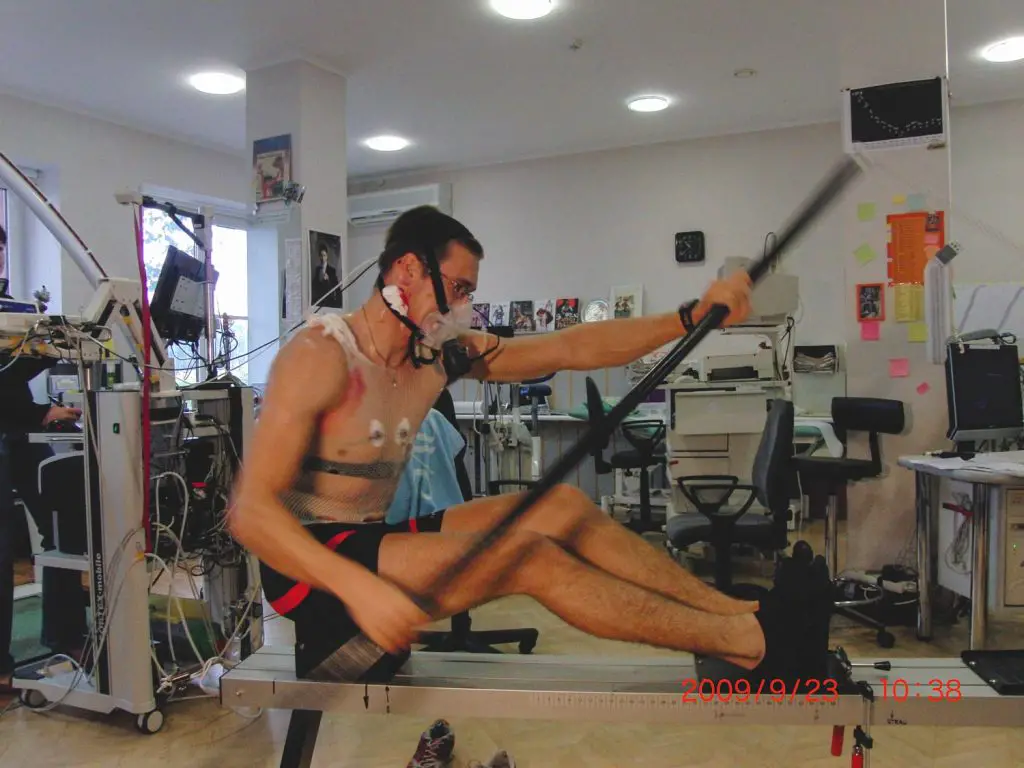How To Calculate Heart Rate Zones For More Effective Training?
One of the best ways to make training process more effective is to listen to your heart. Structuring sessions around a specific target heart rate zone (or a mix of those) will help to focus better on various areas of performance. And get better results! But what is target heart rate zone? What good does sticking to a specific target heart rate zone bring? And, most importantly, how to calculate heart rate zones?
Scroll down to learn.
Heart rate zones help structure training process
So that we’re on the same page, a heart rate is the amount of beats a heart makes in a minute (often shortened to bpm). You can calculate it by counting the amount of beats a heart makes in 6 seconds and multiplying by 10.
A ‘heart rate zone’ is, essentially, a range of exercise intensities within which the current heart rate measurement fall in. These are always defined as a percentage of maximum heart rate.
The background for this is that our body reacts differently to various stress levels. As the intensity changes, so do physiological processes in the body (like how body produces energy, what hormones are released, how does it tolerate pain, etc.).
Athlete’s heart rate is a great indicator of what the body is going through at a specific moment.
Keeping this in mind, athletes and coaches use heart rate zones to organize training process in such way that specific adaptations to stress are targeted. Knowing exact heart rate zones athletes can execute high-quality sessions focused on improving endurance, power or speed.
For example, you may see a coach giving a workout similar to this: 2 hours at 65% with 3 x 20-minute efforts at 75%. A perfect early-season endurance session.

Definition of target heart rate zone
The problem is that it’s not accurate to define intensity only as a percentage of maximum heart rate.
A heart rate zone is a defined range (i.e. 60% – 70%), yes, but people are not that straightforward. Or similar.
Heart rate zones differ from person to person due to a trainload of factors. Which is why absolute numbers don’t matter.
We can do a killer sprint set or not get enough sleep one day and see our heart rate going bananas next morning. Overall stress level, hectic lifestyle, illness – these are just some examples of factors that affect athlete’s fitness condition and, ultimately, heart rate zones.
To account for this, a so-called Target Heart Rate Zone is used. It takes into account both maximum and resting heart rates to determine an accurate zone reflecting athlete’s actual condition.
How to calculate target heart rate zones?
The most precise way how to calculate heart rate zones would be to take a supervised VO2 lab test, where exercise intensity is gradually increased every minute until the point where athlete can no longer maintain it.
Zones, as well as aerobic/anaerobic thresholds are determined based on the speed of lactate accumulation and oxygen intake. Needless to say, such test is quite precise.
However, it’s not practical to do one for someone just starting out (nor is it very cheap to repeat). So, the easiest way to determine heart rate zones would be to use a Target Heart Rate formula (also called Karvonen formula):
Target Heart Rate = [ Max HR – Resting HR ] * XX% + Resting HR
Semi-fun fact: difference between a maximum heart rate and a resting heart rate is also called Heart Rate Reserve (HRR).
There are 5 heart rate training zones in total, each having a certain training benefit:
| Zone | Target Heart Rate | Benefit from Training |
| Z1 | 50% – 60% | Warmup / Recovery |
| Z2 | 60% – 70% | Aerobic Base |
| Z3 | 70% – 80% | Aerobic Endurance |
| Z4 | 80% – 90% | Anaerobic Capacity |
| Z5 | 90% – 100% | Speed Training |
Target Heart Rate Zones are sport-specific, therefore in calculating heart rate zones for a particular sport it’s critical to use the maximum heart rate from that particular sport. Only then it would be a true benchmark for maximum output.

The Resilient Athlete
A Self-Coaching Guide to Next Level Performance in Sports & Life
Are you aiming to become a resilient athlete who is able to withstand any pressure? Be able to jump on any opportunity? Take any challenge life throws at you head on?
Then this book is for you.
Learn moreCalculating target heart rate zone is really only about putting correct (and honest) numbers in right places.
Let’s take a person to visualize it. We’ll call him Ben and imagine he is 30 years old. He measured his resting heart rate to be 50 bpm and estimated his maximum heart rate to be 190 bpm (more on this below). So,
- 60% effort for him would be (190 – 50) x 60% + 50 = 134 bpm
- 70% effort would then be (190 – 50) x 70% + 50 = 148 bpm
If Ben wants to build a solid aerobic base (Target Heart Rate Zone 2 or 60% – 70%), he should make sure his heart rate stays between 134 and 148 beats per minute during his base-building efforts.
Max HR – a benchmark for maximum output
Maximum heart rate is exactly as sexy as it sounds. It’s the maximum amount of beats the heart can pump under maximum stress.
There are 2 ways of finding that out – estimating or measuring.
The easiest way to determine maximum heart rate would be to estimate it using a formula [ 211 – 0.64 x Age ]. While it may not be 100% precise, it’s still a good start for those ust starting out.
There are several reasons to why that formula can be imprecise (including athlete’s background and certain medical conditions), but let’s not focus on that too much now.
Experienced athletes would be better off actually measuring their maximum heart rate in a lab or during a field test. In fact,
Those who already competed in a race may even have a feeling of what their maximum heart rate could be.
There are a couple of field tests to choose from. In my experience, closest to reality happen to be: 20-minute test, 4×2 test and partner-assisted stress test.
Related: 3 Ways To Determine Maximum Heart Rate And Why Athletes Need It

Resting HR – easy way to evaluate recovery
Resting HR is a heart rate measurement taken first thing in the morning (yes, before rolling out of bed). It’s a good indicator of athlete’s current fitness and state of recovery.
Before using it, though, we need a benchmark. Measure resting heart rate every morning throughout the week and take an average of that. Note the days after easy sessions or even days off – these measurements should be most accurate and closer to a ‘normalized’ benchmark.
A resting heart rate much higher than usual (i.e. more than 10% deviation) would indicate that the body is still trying to deal with stress, be it that killer sprint session or a late night at the office/club.
It would be best to take the session easy or have an extra day off.
Related: Athlete Resting Heart Rate – Easy Way To Measure Recovery
Did you find this information useful? Share the post with others using the buttons below.
What to do with all the data?
So there you have it. Once resting & maximum heart rates are known and each target heart rate zone is calculated, it’s important to sit down with your coach and create a plan that would contain the most optimal mix of intensities for you. When done, it’s all about sticking to the plan during every training session and being mentally strong not to side step from it.
Have an opinion? Share via links below and tag @theathleteblog
Tags In
Andrejs Birjukovs
GET A FREE TRAINING PLAN
Subscribe to my email list and get access to a free 4-week “back in shape” training plan
You’ll also get two full-body strength sessions and some other goodies!

How did I get here?
Hey there! My name is Andrejs and I am here to inspire, entertain and get you fit for any adventure.
I went from being an over trained pro athlete to an endurance coach sharing how to listen to your body and live life to the fullest.
Traveling, new sports & activities brought new meaning to my training and made it much more effective, fun and enjoyable. And I'm here to help you do the same.


